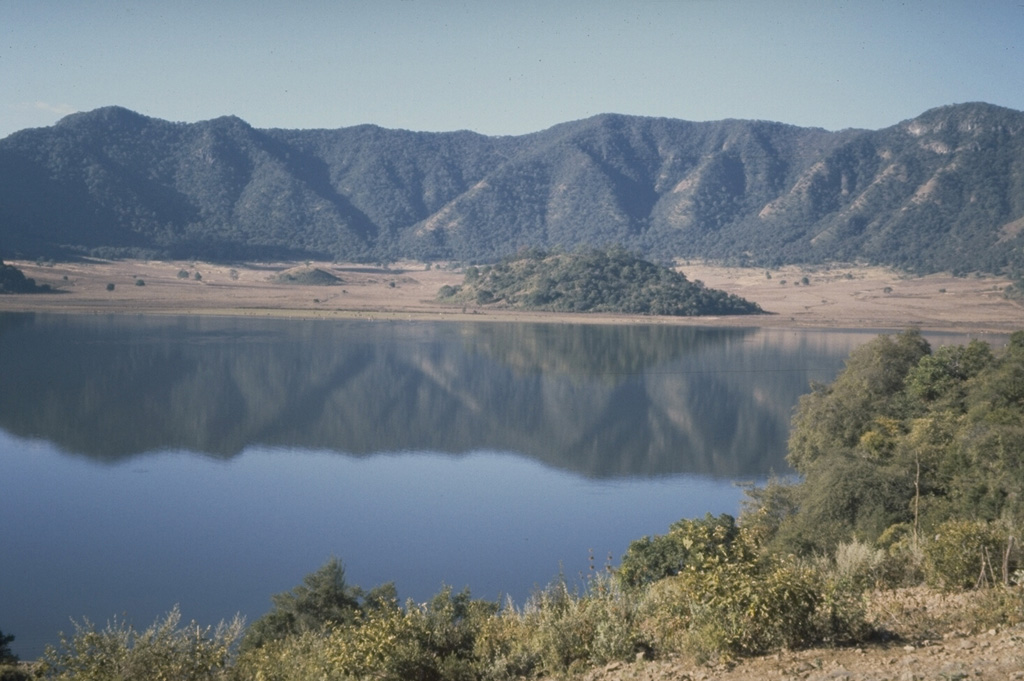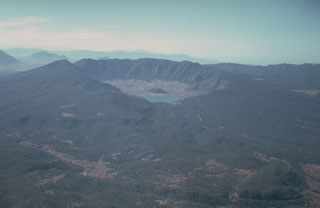Global Volcanism Program | Image GVP-03650

The oval-shaped, 5 x 2.5 km Tepetiltic caldera, seen here from the shore of a lake that occupies the older NE side of the caldera, was formed during two eruptive episodes that produced voluminous rhyodacitic airfall tephra and ashflows. Formation of the compound caldera was closely followed by emplacement of two rhyodacitic lava domes on the eastern flank. The low forested hill at the far side of the lake is a lava dome extruded near the intersection of the two calderas. A second dome was emplaced to the left on the floor of the higher SW caldera.
Photo by Jim Luhr, 1978 (Smithsonian Institution).
![]() This image is made available under the Public Domain Dedication CC0 license, but proper attribution is appreciated.
This image is made available under the Public Domain Dedication CC0 license, but proper attribution is appreciated.

Tepetiltic
